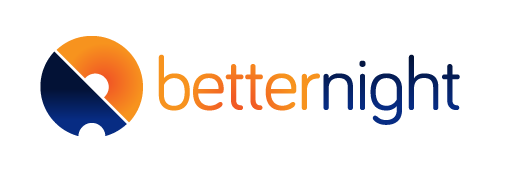Respiratory Therapists: The Unsung Heroes in Successful Sleep Apnea Care
Respiratory Care Week (Oct. 22-28, 2023) recognizes and celebrates respiratory therapists' contributions to the care and education of patients with lung or breathing disorders. As sleep medicine has grown into a large and complex practice area, including 77 identified sleep disorders, respiratory therapists have become trusted critical care partners on the journey to better sleep and overall health.
Respiratory Therapist Training and Certification
Obstructive sleep apnea, the most common type of sleep apnea, affects over 30 million people in the US. Sleep apnea is a chronic sleep disorder characterized by breathing that stops and starts repeatedly throughout the night. Its symptoms include snoring, morning headaches, excessive daytime fatigue and "brain fog." Respiratory therapists involved in sleep apnea care have undergone additional training to learn the most successful treatments and equipment. The two most common credentials for respiratory therapist are the CRT (Certified Respiratory Therapist) and the RRT (Registered Respiratory Therapist). How well you score on the Therapist Multi-Choice Exam (TMC) determines eligibility for a second exam, the Clinical Simulation Exam (CSE). Passing both exams awards the RRT certification, the highest certification for healthcare professionals who clinically assess patients with sleep disorders. For RTs interested in performing in-lab sleep studies, the first step in determining a sleep apnea diagnosis is additional training and testing required to hold the RPSGT credential. These specialists in polysomnography work in a multi-disciplinary field alongside cardiologists, neurologists and respiratory specialists.
The Sleep Apnea Diagnosis
Polysomnography, also known as a sleep study, is used to determine a variety of sleep disorders and is done overnight in a sleep lab. A respiratory therapist in this environment would likely have a Sleep Disorders Specialty credential and may be responsible for patient data gathering before the study, recording and scoring the sleep study and maintaining the polysomnographic equipment. Once your physician has determined the possibility of sleep apnea, they may order an in-home sleep study. A home sleep study captures less data than polysomnography, but can diagnose sleep apnea in most cases. Specialized equipment must be picked up from a sleep center and used for one night at home. The study includes nasal tubes that attach with a mask to measure airflow, a chest belt that measures respiration and a finger clip to measure blood oxygen levels. In most instances, the original practice and the sleep center are separate businesses, so there may not be coaching or support on how to use the home sleep study equipment.
CPAP and Compliance
If you receive a positive diagnosis of sleep apnea, your doctor will likely write a prescription for Continuous Positive Airway Pressure therapy, better known as CPAP. CPAP is usually the first treatment option for sleep apnea and is considered the gold standard. CPAP machines pressurize and filter the air and deliver it through a hose and mask you wear on your face while sleeping. CPAP keeps airways open and improves breathing quality, leading to improved sleep and overall health. Various CPAP masks and machines are available based on how you sleep and breathe. For some, getting used to CPAP comes easily, while others may struggle, ultimately stopping treatment altogether. According to the National Institute of Health, compliance rates are usually in the 30-60% range.
While insurance generally pays for durable medical equipment, compliance guidelines have been established to help keep costs low and ensure patients use the equipment. The standard usage is 4 hours per night for 70% of nights. CPAP equipment can be purchased through the manufacturer or a third-party retailer. Many specialty CPAP retailers will have a respiratory therapist on staff who can assist with finding suitable machine to align with patient needs. Unfortunately, these retailers are separate businesses and not aligned with your practitioner, so the care you receive is not shared with your practitioner.
Telehealth to the Rescue
The process of screening, diagnosing and treating sleep apnea involves visits to multiple isolated specialists and labs who work without a coordinated, comprehensive care plan. Because the time to treat patients can take 3-6 months, the current sleep health system feels disorganized, lacks urgency and can lead to patient disengagement. Without the support of a coordinated care team, including the coaching of a respiratory therapist, the number of people with sleep apnea continues to grow despite the many available treatments. New telehealth options have helped bridge the gaps between all providers involved in diagnosing, caring and treating sleep apnea.
BetterNight offers end-to-end telehealth treatment that combats the inefficiencies of today's current sleep health system by managing all sleep concerns in a virtual one-stop shop. The BetterNight team includes over 300 sleep health professionals and specialists, including Board-registered polysomnographic technicians, respiratory therapists, Cognitive Behavioral Therapy counselors and data analysts. BetterNight provides free ongoing coaching and support throughout the process. This is especially important when it comes to CPAP usage - using personalized support has led to greater therapy compliance and a stellar patient satisfaction rate of 99%.
Your Respiratory Therapist as Care Partner
Patients who are engaged with a telehealth solution are less likely to lose interest and become active participants in their treatment. Having respiratory therapists working with individual patients, from sleep study to treatment, offers a sense of comfort that leads to a more positive patient experience and better overall outcomes.

